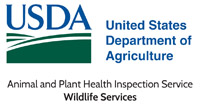United States Department of Agriculture: Animal and Plant Health Inspection Service

United States Department of Agriculture Wildlife Services: Staff Publications
Document Type
Article
Date of this Version
2018
Citation
Emerging Topics in Ecotoxicology 5
Abstract
Our knowledge of the toxicity of anticoagulant rodenticides (ARs) can be traced to investigations of Karl Paul Link and colleagues on “bleeding disease” in cattle, the eventual isolation of dicoumarol from moldy sweet clover, synthesis of this causative agent, and its application as a therapeutic anticoagulant in clinical medicine in 1941 (Link 1959). The notion of a coumarin-based rodenticide as a better “mouse-trap” occurred to Link in 1945 while reviewing laboratory chemical and bioassay data. By 1948, the highly potent compound number 42, warfarin, was promoted as a rodenticide (Link 1959; Last 2002). Through laboratory studies and clinical use of warfarin (Coumadin), a detailed understanding of the mechanism of action and toxicity of warfarin and related ARs (Fig. 3.1) unfolded in the decades that followed.


Comments
© Springer International Publishing AG 2018
This document is a U.S. government work and is not subject to copyright in the United States.
DOI 10.1007/978-3-319-64377-9_3